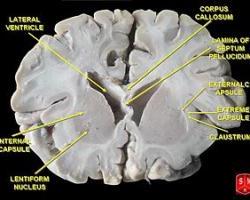People whose limbs are intact can nonetheless experience having a phantom limb, according to new research out of Sweden.
Neuroscientists from the Karolinska Institutet in Sweden, whose findings appear in the Journal of Cognitive Neuroscience, have demonstrated how the experience of having a phantom limb, as well as the experience of having an intact physical body, are not as concrete or as obvious as one might believe.
People who have undergone an amputation and experience a phantom limb — an experience in which the brain convinces them they still have the missing limb and even causes intense pain for the amputee — is an experience that would seem to be beyond the scope of understanding for non-amputees.
However, investigators designed a study to demonstrate how healthy participants can experience the "perceptual illusion" of having a phantom hand.
Demonstrating the phantom experience
The study worked like this: Participants sat at a table with their right arm behind a screen and therefore beyond their field of vision. Researchers touched their right hands using a small paintbrush, and they aped the exact same movement using a different paintbrush up in the air so that participants could see it.
Said study lead author Arvid Guterstam:
We discovered that most participants, within less than a minute, transfer the sensation of touch to the region of empty space where they see the paintbrush move, and experience an invisible hand in that position. Previous research has shown that non-bodily objects, such as a block of wood, cannot be experienced as one's own hand, so we were extremely surprised to find that the brain can accept an invisible hand as part of the body.
The study featured 234 participants and 11 experiments.
To bolster the findings and demonstrate that it was indeed working, researchers took things up a notch and used a knife and some stabbing gestures towards empty space where that invisible hand was perceived to be. Participant stress responses were measured and found that they had perceived a bodily threat when the illusion was maintained but that it was absent when the illusion was shattered.
Said Dr. Henrik Ehrsson, principal researcher and docent at the Department of Neuroscience:
This illusion suggests that the experience of phantom limbs is not unique to amputated individuals, but can easily be created in non-amputees. These results add to our understanding of how phantom sensations are produced by the brain, which can contribute to future research on alleviating phantom pain in amputees.
Source: MNT








